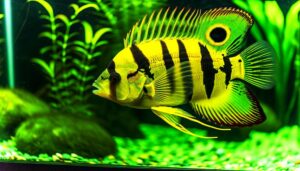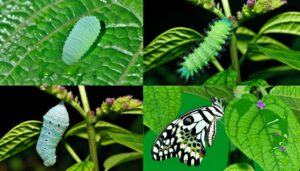Fascinating Facts About the Peacock Butterfly: 3 Highlights
The Peacock Butterfly (Aglais io) is notable for its eye-catching ocelli, designed to deter predators by mimicking larger animal eyes. These striking spots are complemented by brownish-red surrounding areas, enhancing their defensive efficacy.
Inhabiting temperate regions of Europe and Asia, they thrive in woodlands, meadows, and even urban gardens. Females lay green eggs on host plants, leading to the development of black, spiny caterpillars.
Feeding on nectar from flowers and nettles, their life cycle involves a metamorphic transformation within a chrysalis. These intricate characteristics highlight their sophisticated survival strategies and ecological adaptations, offering more insights into their fascinating biology.
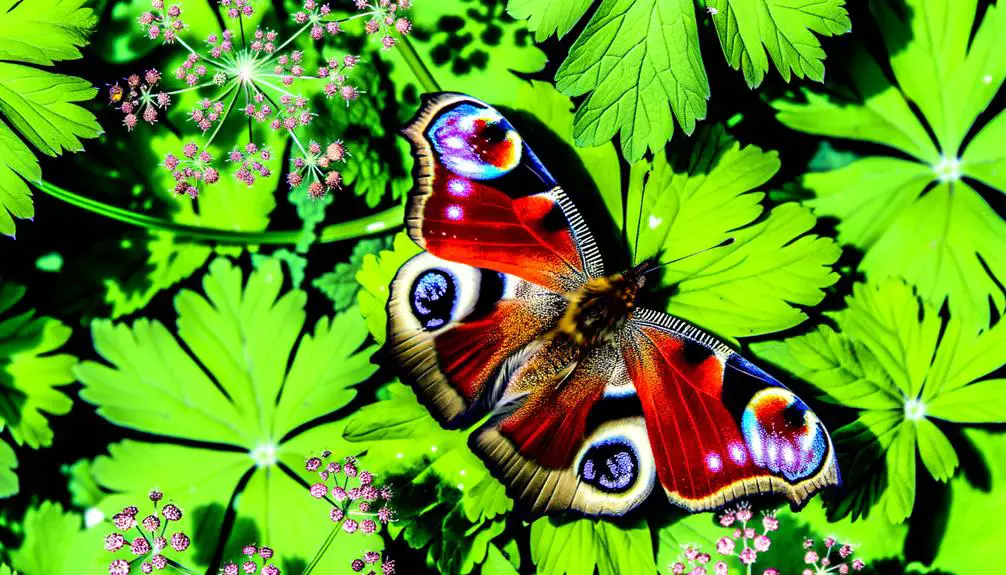
Key Takeaways
- Peacock Butterflies have distinctive eye spots on their wings to deter predators.
- They inhabit temperate regions of Europe and Asia, preferring woodlands and forest edges.
- Their life cycle includes eggs, caterpillars, pupation, and adult stages.
- They primarily feed on nectar from flowers and caterpillars consume nettles.
Unique Wing Patterns
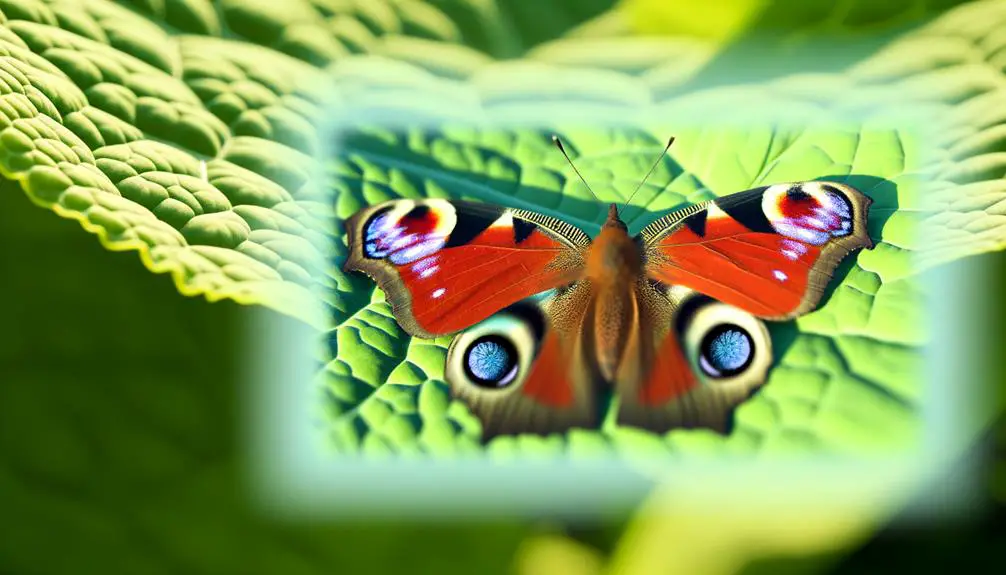
The Peacock Butterfly (Aglais io) exhibits unique wing patterns characterized by eye-like spots that serve as an effective defense mechanism against predators. These distinctive ocelli are located on each of the butterfly’s four wings, with the forewings displaying smaller, more elliptical spots and the hindwings featuring larger, more rounded ones.
The coloration of these spots ranges from deep black to bright blue, encircled by concentric rings of yellow and red. This intricate design is not merely aesthetic; it plays a vital role in the butterfly’s survival.
The surrounding wing areas are primarily brownish-red, providing a stark contrast that accentuates the eye spots. This contrast enhances the visual impact, making the eye spots appear more vivid and startling to potential threats.
Defense Mechanisms
Although primarily known for their striking appearance, Peacock Butterflies employ several intricate defense mechanisms to evade predators.
One prominent strategy is their use of eye spots on their wings, which mimic the eyes of larger animals, deterring potential threats. When threatened, they can suddenly reveal these eye spots by flicking their wings open, startling and confusing predators.
Additionally, Peacock Butterflies exhibit a behavior called ‘startle display,’ where they produce a hissing sound by rubbing their wings together, further dissuading attackers.
Another defensive tactic includes their ability to remain motionless, blending seamlessly into their surroundings with their cryptic coloration when their wings are closed.
These multifaceted defense mechanisms are essential for their survival in the wild.
Habitat and Distribution
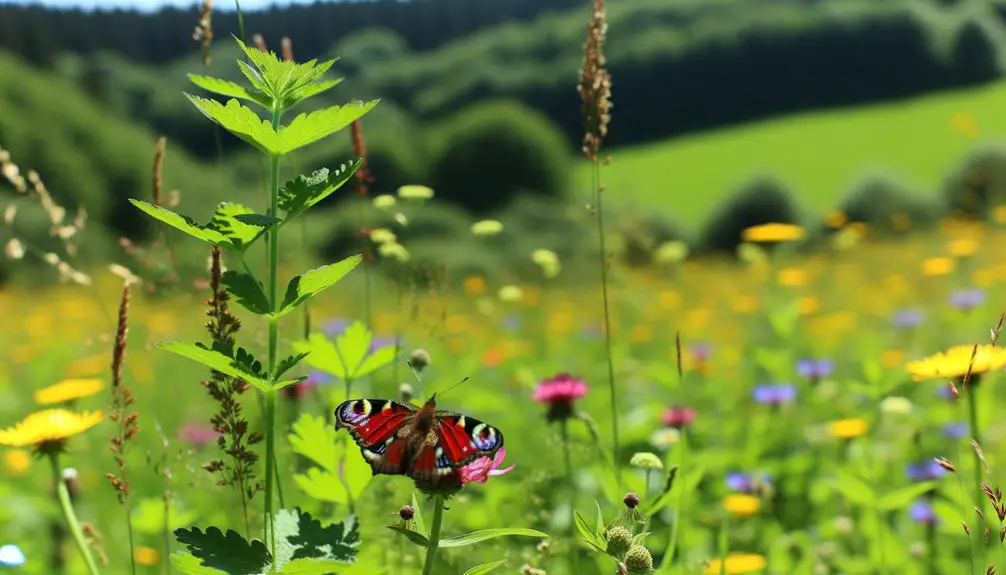
Inhabiting a diverse range of environments, Peacock Butterflies (Aglais io) are mainly found across temperate regions of Europe and Asia. These butterflies thrive in habitats that offer abundant nectar sources and suitable conditions for breeding and overwintering.
Key areas of distribution include:
- Woodlands and Forest Edges: Rich in flowering plants, providing essential nectar and protection.
- Meadows and Grasslands: Open areas with a variety of host plants for larval development.
- Gardens and Parks: Urban and suburban green spaces that mimic natural habitats.
- Wetlands: Areas with high humidity, promoting a conducive microclimate for survival.
This broad habitat preference underscores their adaptability and resilience, contributing to their widespread presence in these regions.
Life Cycle Stages
Understanding the life cycle stages of the Peacock Butterfly reveals a complex and fascinating journey from egg to adult.
- The process begins when a female lays clusters of green eggs on the underside of host plant leaves, primarily stinging nettles (Urtica dioica).
- These eggs hatch into black, spiny caterpillars adorned with white spots.
- The larval stage involves rapid feeding and growth, culminating in pupation.
- The caterpillar forms a chrysalis, a protective casing where metamorphosis occurs.
- Inside the chrysalis, the caterpillar undergoes a profound transformation, reorganizing its body structure.
- After approximately two weeks, an adult butterfly emerges.
- The newly formed Peacock Butterfly (Aglais io) then dries its wings before taking flight, completing the life cycle.
Feeding Habits
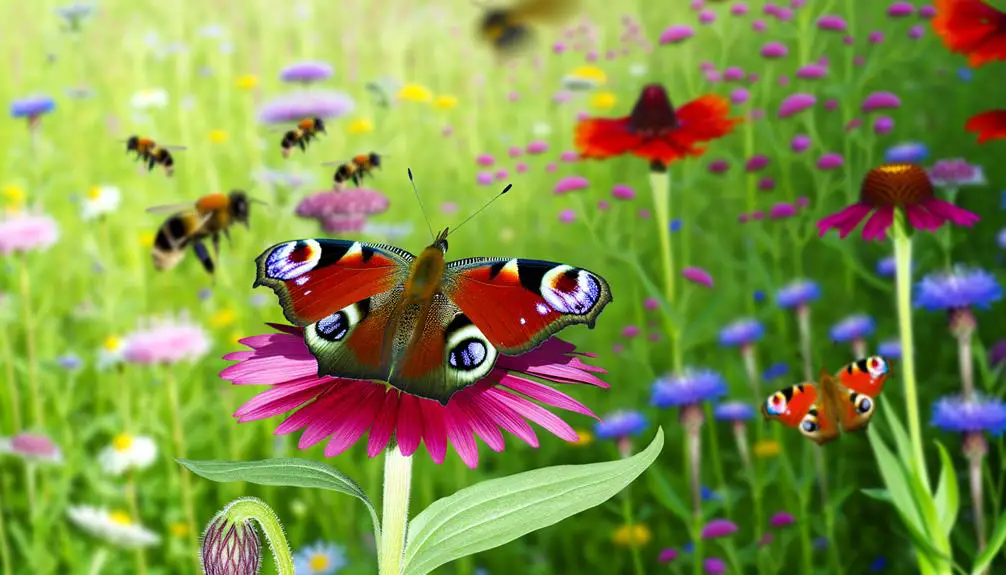
The feeding habits of the Peacock Butterfly (Aglais io) are intricately linked to its habitat and seasonal availability of resources, primarily nectar from a variety of flowering plants.
These butterflies exhibit a preference for certain flora, which provides vital nutrients for their survival and reproduction.
Key aspects of their feeding behavior include:
- Nectar Sources: They commonly feed on nectar from flowers such as buddleia, dandelions, and thistles.
- Larval Food Plants: The caterpillars primarily consume nettles (Urtica dioica), essential for their growth and development.
- Seasonal Variations: During autumn, they increase nectar intake to build fat reserves for hibernation.
- Feeding Adaptations: Their proboscis is adapted to extract nectar efficiently from tubular flowers.
Understanding these habits is important for conservation efforts.
Conclusion
The peacock butterfly exhibits unique wing patterns that serve as both camouflage and deterrence against predators. Its defense mechanisms, such as wing displays and hissing sounds, enhance its survival. These defense mechanisms make the peacock butterfly a fascinating subject for researchers studying predator-prey interactions. Similarly, in the world of angling, enthusiasts often discuss strategies for butterfly peacock bass fishing, a popular sport that requires skill and knowledge of fish behavior. Both the butterfly and the bass showcase remarkable adaptations that contribute to their ability to thrive in their respective environments.
Found across Europe and temperate Asia, its habitat ranges from woodlands to gardens. The life cycle spans egg, larval, pupal, and adult stages.
Feeding primarily on nectar, the butterfly contributes to pollination. The intricate adaptations of the peacock butterfly underscore its evolutionary success.




